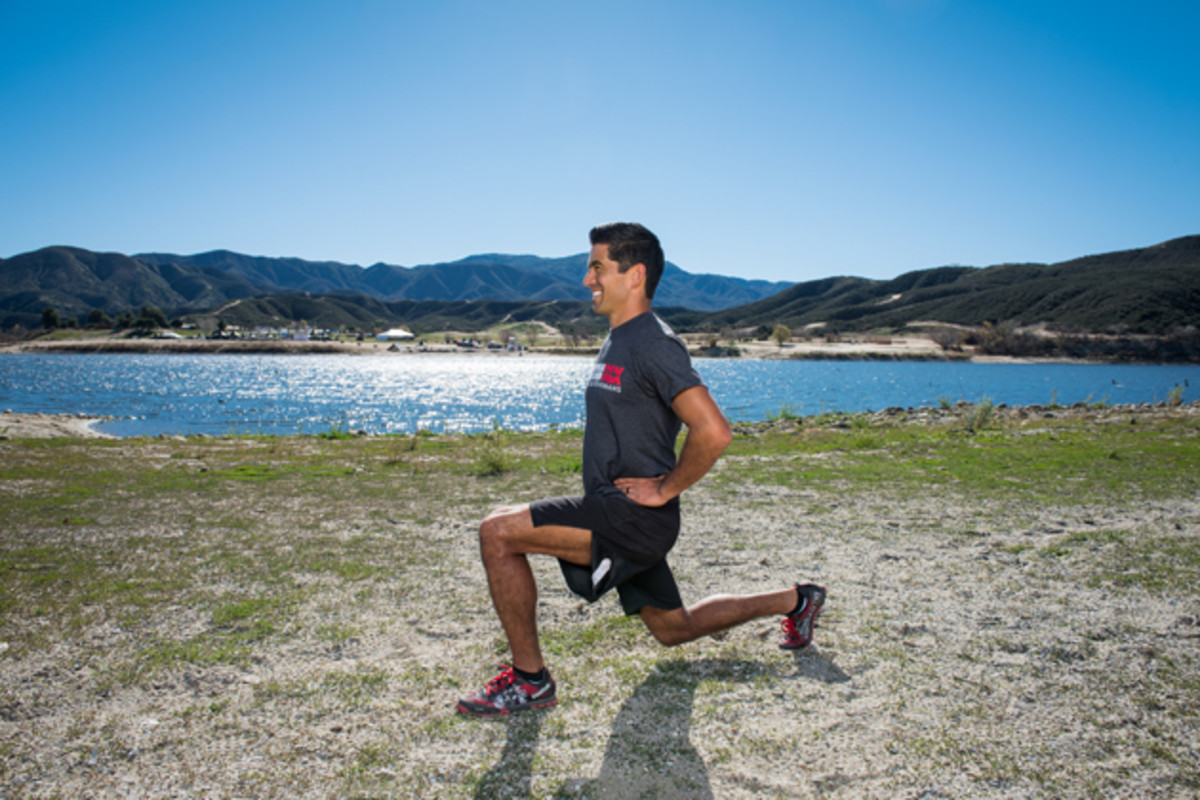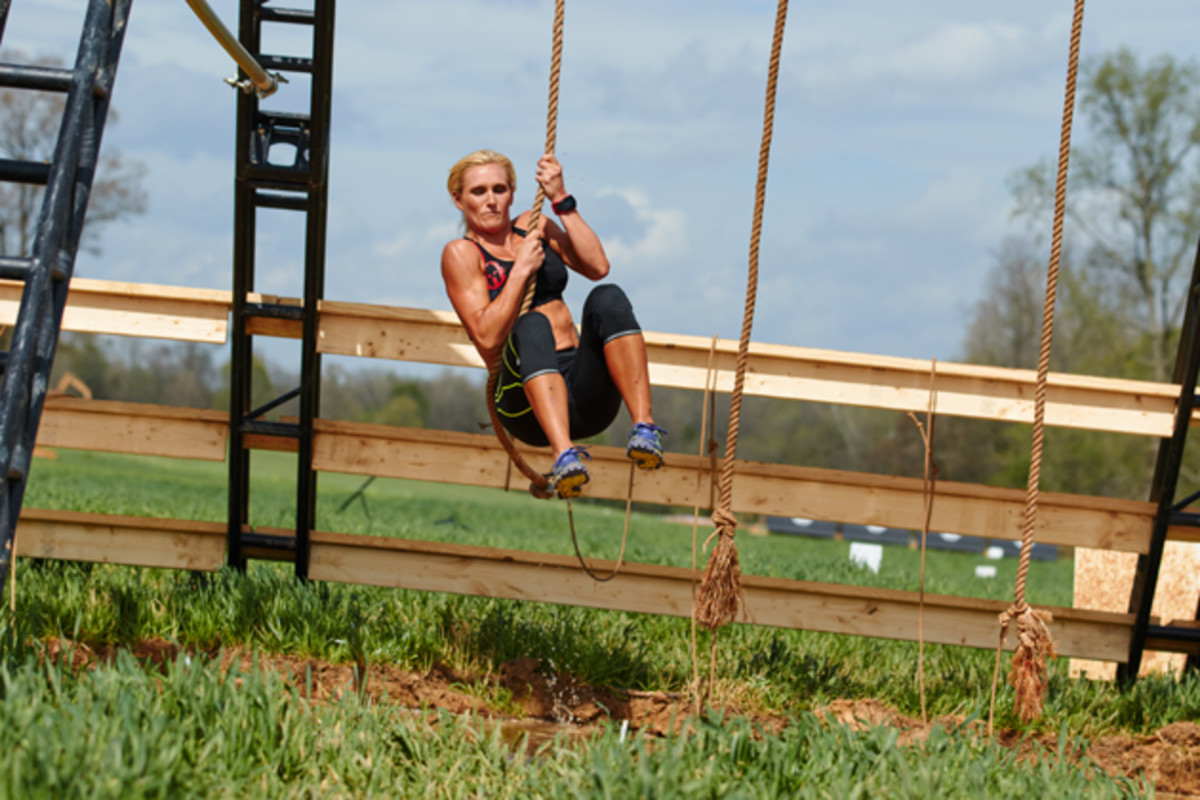12 tips for finishing a Spartan race from top SGX-certified trainers

More than 10,000 athletes and spectators from around the world will head to Lake Tahoe, Calif., for the Spartan Race world championships competition on Oct. 3 and 4, capping off a season of grueling obstacle races at the former Winter Olympics site in Squaw Valley. The weekend will feature beginner courses, starting at three miles long with at least 20 obstacles, and the “Ultra Beast” championship for elite men and women, featuring more than 26 miles and more than 60 obstacles.
With 120 events around the world throughout the year, the Spartan race is a test of mental and physical strength and endurance, featuring tasks like wall climbs, spear throws, fire jumps and more, typically on a tough terrain. There are three main types of races—Sprint, Super and Beast—featuring different levels of distance and obstacles, but the penalty for failing is always the same: 30 burpees.
No matter the distance or obstacle, a Spartan race is sure to be unpredictable. SI.com consulted with two certified Spartan SGX coaches—Doug Sklar of PhilanthroFIT and Jonathan Aragon of Aragon Fitness—to create your go-to guide to conquering any Spartan or obstacle race, with confidence.
Set a realistic training schedule
SGX is Spartan’s official training program and there are nearly 200 certified coaches around the world who follow a similar timetable for preparing for a race. Whether you’re working with an official group or training on your own, both Sklar and Aragon suggest following SGX’s three phases: Phase 1, to improve movement and motivation and build a foundational level of conditioning; Phase 2, to increase stamina and improve fitness and health by increasing work capacity; and Phase 3, to maximize physical output and get out of your “comfort zone.”
Each phase typically runs for two to three weeks, meaning the entire program should start at least 10 to 12 weeks before the race date. Start early and make a schedule.
Start with body weight exercises
If you’re a beginner or a seasoned athlete, Sklar recommends kicking off your Spartan training with simple body weight exercises and movements.
“You have to be able to control your own body before adding weight and resistance and obstacles into the picture,” says Sklar. “Then you can gradually progress in both strength and technique and reducing the risk for injury at the same time, even for those who are more advanced in their training.”

Learn to lunge and crawl
Aragon uses lunges as his go-to exercises for lower body stabilization and core strength. Racers can build from a static split lunge, where you are just moving up and down in the lunge position, to a full-lunge movement or walking lunge.
“Mastering the bear crawl is another [good exercise],” says Aragon. “It will enhance muscular endurance and mobility and will help you towards the barbed wire. You wont be in the bear crawl position but you will have the ability to move through easier if you master the bear crawl.”
Start by moving forward in the bear crawl and as you advance, Aragon encourages switching to reverse, lateral and diagonal movements.
Learn multiple approaches to completing obstacles
Keep in mind: There is more than one way to complete a task during a race. “Practicing multiple techniques can help you on race day and it actually works different muscles as well,” Sklar says.
On the monkey bars, for example, racers can use various grips: palms facing away from you, one bar at a time; palms facing away, swinging from one bar to the next; palms facing each other, moving sideways across the bars.
- MORE EDGE: Making the case for more Ironwomen in Kona
Eat up
Nutrition is key both during training and on race day, and a proper diet can actually help you perform better. “Learn how to eat enough,” Aragon says. “Your calorie base should be higher due to intensity of the sport. Learn how to portion out your food based on carbohydrates, proteins and fats and add in extra carbs portioned throughout all three daily meals in the week before the race.”
Keep your head in the race
In the final phase of his training program, Aragon incorporates what he calls “beast training,” where the workouts are very intensive and participants don’t know when they are going to finish.
“Most sessions are set up as 90 minute classes, but in the end I do 90 minutes plus and you don’t know when it ends,” says Aragon. “That’s where mental comes in. I have a list of tasks and objectives and it’s up to them to stick with it and complete it if it goes over the 90 minutes.”
He says he’s never seen a single person give in. “Those sessions are where you start seeing the teamwork and camaraderie come in, with everyone cheering each other on and helping to push one another.”
Check the weather
Wearing the right gear is key, especially as races can take place in different climates and seasons. Sklar advises racers to check the weather—and “don’t necessarily trust the weather report either.”
“Expect the worst and have gear for both a cold and warm weather race,” says Sklar. “At starting line, you typically want to be warmed up, not dripping sweat, so dress so you can take off layers if necessary.”

Make a plan with your racing partner or group
Whether you’re training or racing with one person or a large group, Sklar says its important to communicate your personal goals with the team.
“Go over all possible scenarios for race day,” he says, as some teammates may struggle while others surge ahead. In order to avoid any arguments on race day, discuss how you will handle different situations ahead of time. Is it OK if I go ahead? What happens if someone falls behind? Are we committed to sticking together or only moving as fast as the slowest person?
“Stick to whatever you agree on,” Sklar says. “Once you get out there and adrenaline kicks in, you’ll avoid friction and have a better race.”
Consider your height and weight
At 5’3”, Sklar knows the 8-foot wall will be a difficult task to complete. He reminds racers to be aware of how your body composition stacks up against the obstacles, both positively and negatively, in order to conserve energy and manage fatigue throughout the race.
“I know that the wall is going to be a challenge, so I’m going to attack the other obstacles I’m stronger at, like overhanging obstacles where having less body weight is advantageous for me because I don’t have to carry as much while hanging,” he says. “But for the bucket brigade, I’m carrying 60-70% of my body weight so I know have to train extra hard for that and focus more during the race.”

Learn to love the burpee
If you are unable to complete an obstacle, the penalty is always 30 burpees, completed to Spartan standards: chest must hit the ground, feet must leave the ground. Aragon suggests training for burpees in two different ways: slow to work on power and explosion, and fast, in a set amount of time, to build conditioning.
“From a fitness aspect, it’s one of the most intense exercises you can possible do and requires zero equipment,” Aragon says.
Don’t forget the biggest obstacle: the terrain
“Don’t lose sight of the biggest obstacle, which is the mountain or the trail or the course. You’ll have to navigate that distance,” Sklar says. “There are 20 or so obstacles, but most of the time is going to be spent walking or running. Some people get lost in the obstacles and don’t train much cardio,” says Sklar.
He advises performing an uninterrupted run at a comfortable pace for the time you expect to be out on the course. And if your race is being held in a stadium, prepare to climb and descend stairs. “Going downhill will sap your legs more than the uphill on the stairs,” Sklar says.
Respect the race
No matter what your level of fitness is, Sklar says all athletes should understand the details of the obstacles and give the body ample time to prepare for a grueling, vigorous and challenging race.
“Very rarely do you see people decide to do a marathon just a week before the race—there’s a respect for longer distance running,” says Sklar. “But for some reason a lot of people think they can get off the couch and do [a Spartan race] and those are the people who get injured. Respect the race.”
